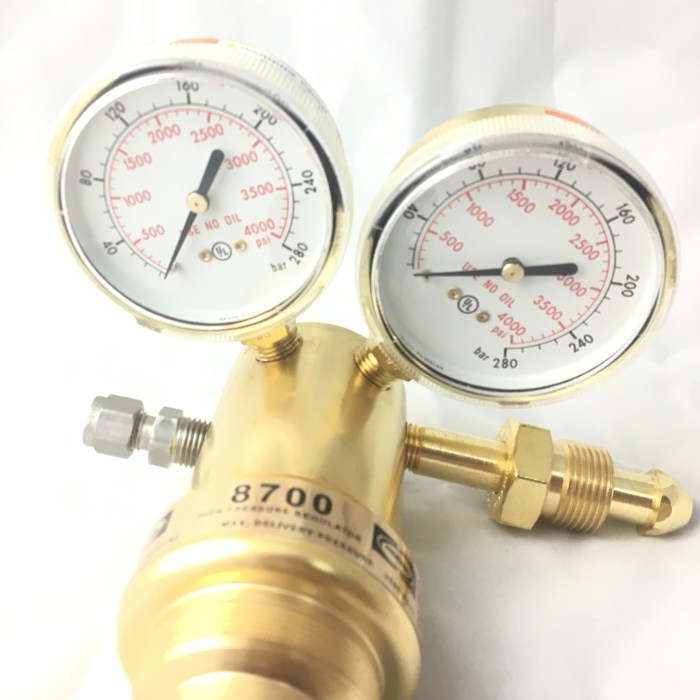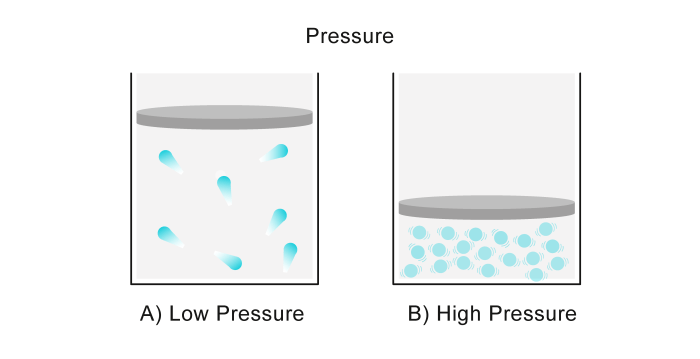Why is a pressure regulator necessary when using nitrogen cylinders? This question is crucial for ensuring safety and optimal performance when working with these pressurized containers. Understanding the purpose and types of pressure regulators is paramount, as they play a vital role in controlling and regulating the flow of nitrogen gas.
This comprehensive guide will delve into the importance of pressure regulators, their various types, proper installation and maintenance techniques, safety precautions, and diverse applications. By exploring these aspects, we aim to provide a thorough understanding of why pressure regulators are indispensable for safe and efficient nitrogen cylinder utilization.
Pressure Regulation for Nitrogen Cylinders: Why Is A Pressure Regulator Necessary When Using Nitrogen Cylinders

Nitrogen cylinders are widely used in various industries for applications such as purging, inerting, and pressurizing. To safely and effectively utilize these cylinders, a pressure regulator is essential. A pressure regulator controls the flow of nitrogen from the cylinder, reducing the high pressure to a usable level and ensuring a consistent and stable supply.
Without a pressure regulator, the uncontrolled high pressure of nitrogen can pose significant hazards. The sudden release of high-pressure nitrogen can cause physical injuries, damage equipment, and create an unsafe work environment.
Types of Pressure Regulators
There are several types of pressure regulators available for nitrogen cylinders, each with its own features and benefits:
- Single-Stage Regulators:These regulators are simple and economical, designed for basic applications where precise pressure control is not critical.
- Two-Stage Regulators:Two-stage regulators provide more precise pressure control and are suitable for applications requiring a consistent and stable pressure.
- Diaphragm Regulators:Diaphragm regulators use a flexible diaphragm to control the flow of nitrogen, offering high accuracy and sensitivity.
- Pistol Grip Regulators:Pistol grip regulators are designed for handheld use, providing convenient and precise pressure control.
The appropriate type of regulator depends on the specific application and the required level of precision and control.
Proper Installation and Maintenance
Proper installation and maintenance of the pressure regulator are crucial for safe and efficient operation:
- Installation:Ensure that the regulator is compatible with the nitrogen cylinder and the intended application. Follow the manufacturer’s instructions for proper installation, including connecting the regulator to the cylinder valve and securing it tightly.
- Maintenance:Regularly inspect the regulator for any signs of damage or wear. Clean the regulator periodically to remove any contaminants or debris. Lubricate moving parts as per the manufacturer’s recommendations.
- Regular Inspections and Servicing:Schedule regular inspections and servicing of the regulator by a qualified technician to ensure optimal performance and prevent potential malfunctions.
Safety Precautions, Why is a pressure regulator necessary when using nitrogen cylinders
Following safety protocols when using pressure regulators is essential to minimize risks:
- Never exceed the maximum pressure rating of the regulator or the cylinder.
- Use pressure gauges to monitor the pressure and ensure it remains within the safe operating range.
- Handle and store nitrogen cylinders properly, following industry guidelines and regulations.
- Be aware of the potential hazards of nitrogen asphyxiation and take appropriate precautions.
Applications of Pressure Regulators
Pressure regulators are used in various applications where nitrogen cylinders are employed:
- Purging:Removing oxygen from a system or vessel by introducing nitrogen.
- Inerting:Creating an inert atmosphere to prevent oxidation or chemical reactions.
- Pressurizing:Providing a controlled pressure source for various processes, such as testing, calibration, and hydraulic systems.
- Food and Beverage Industry:Preserving and packaging food and beverages in a nitrogen-rich environment.
- Medical Applications:Delivering nitrogen for medical procedures, such as cryotherapy and anesthesia.
Detailed FAQs
Why are pressure regulators necessary for nitrogen cylinders?
Pressure regulators are crucial for reducing the high pressure of nitrogen stored in cylinders to a usable and safe level for various applications.
What are the potential hazards of not using a pressure regulator?
Without a pressure regulator, the uncontrolled release of high-pressure nitrogen can cause explosions, equipment damage, and severe injuries.
How do I choose the appropriate pressure regulator for my nitrogen cylinder?
Consider the flow rate, inlet pressure, outlet pressure, and compatibility with the nitrogen cylinder when selecting a pressure regulator.
What are the essential safety precautions when using pressure regulators?
Always follow manufacturer instructions, inspect equipment regularly, use appropriate personal protective equipment, and store cylinders securely.


